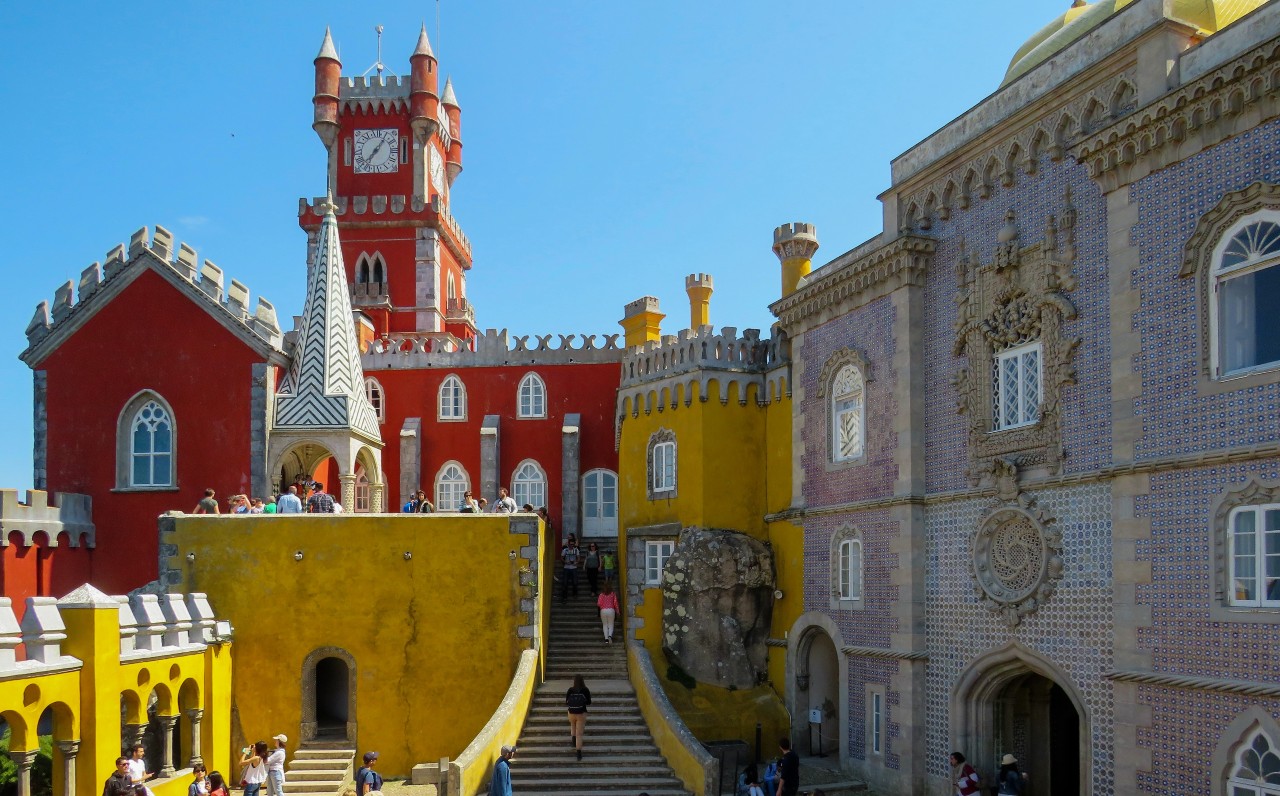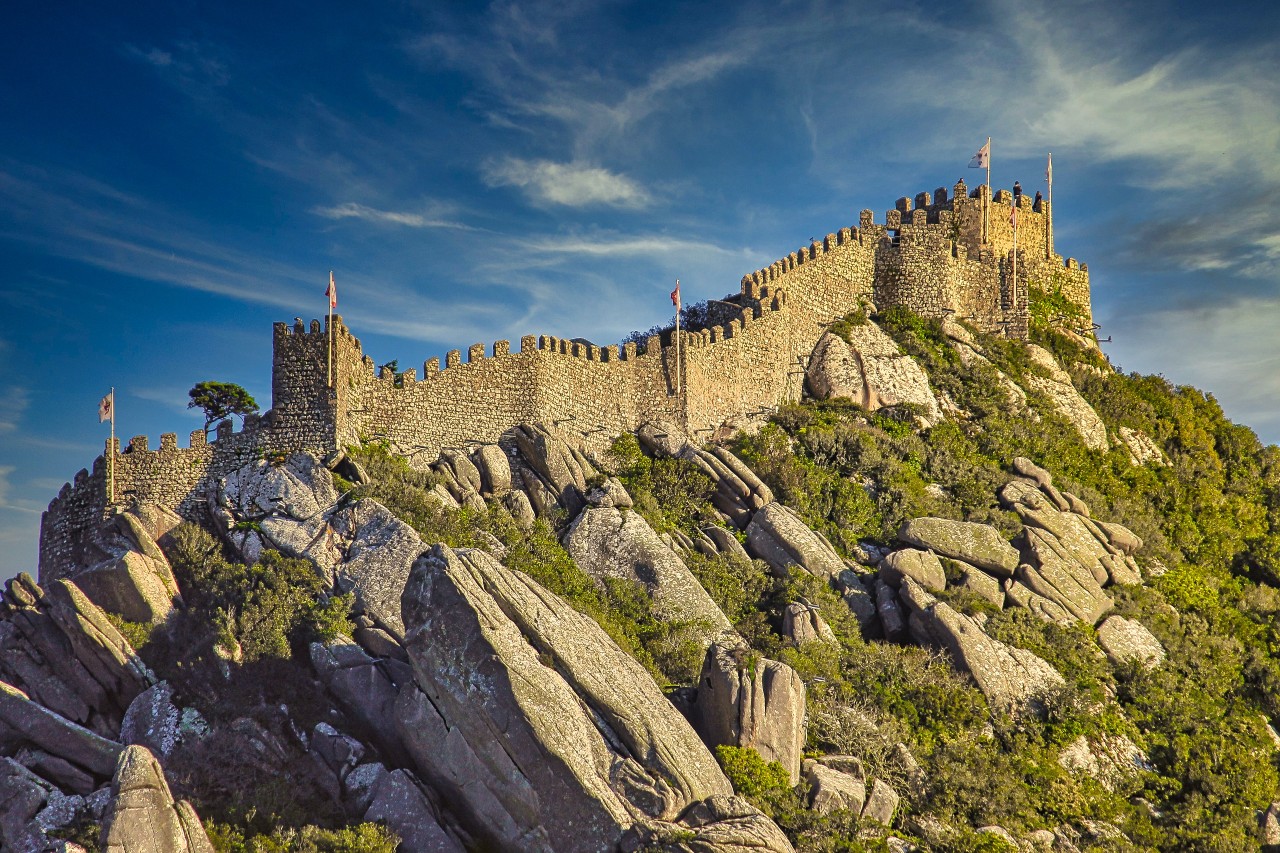
My dearest friend,
You must come to Sintra, a beautiful Portuguese town, located in the region north of Lisbon.
You enter Sintra-Cascais natural park which from the rugged coast and only half of this story encompasses sand dunes, vineyards, wooded hillsides and, at its centre, you will find the beautiful fairy tale town of Sintra.
Close your eyes and imagine, a longtime royal sanctuary, its forested terrain is studded with pastel-coloured villas and palaces. Sintra is breath-taking, magical and looks like a film set, it is one of the most beautiful places I have seen, situated between the mountains and the sea.
It is a place for those who are not afraid to get lost in rich history, amazing scenery, culture, delicious traditional food and romantic legends. Sintra is a place where the green of the mountains and the blue of the sea blend together.
The center of the Vila de Sintra is famous for its 19th-century Romanticist architecture, historic estates, villas, gardens, and royal palaces and castles, which resulted in the classification of the town as a UNESCO World Heritage Site in 1995.

Tour the pink and yellow battlemenst of The Palacio de Pena
The Palacio de Pena is a jewel of 19th-century Portuguese Romanticism. In the mid-19th century, King Fernando II built his own summer palace, Pena, on the highest point of Sintra. Incorporating a 16th-century convent, the palace has elements of Gothic, Manueline, Islamic and Renaissance styles.
The architecture of the Palacio da Pena will catch your attention because of its domes, its Moorish horseshoe-shaped arches and its towers with pink and yellow battlements, from which there are fantastic views of the Sintra Mountains. The palace is a UNESCO World Heritage Site and one of the Seven Wonders of Portugal.

Sintra National Palace, a fortress for the largest collection of Mudehar tiles in Portugal
The Moorish and Manueline style Sintra National Palace is distinguished by dramatic twin chimneys and elaborate tilework. The Moors made their mark on the landscape, building this fortress on the top of Sintra mountain in the ninth-century. Its crenellated ramparts, snaking up the hillside like a mini–Great Wall of China, are visible from almost every other major site in the area. The palace is considered an example of organic architecture, an ensemble of apparently separate bodies, but which form part of an articulated whole through courtyards, staircases, corridors and galleries. It also has the largest collection of Mudejar tiles in the country.

Admire the view and hike around the Castelo dos Mouros
The Castelo dos Mouros is a exceptional place to admire the view stretching from Sintra to the sea. Stretching over two peaks of the Serra de Sintra, the castle dates back to the beginning of the Arab occupation of the peninsula in the 8th century. Strategically built on one of the highest peaks of the mountains and on an outcrop of large granite rocks, which to the north act as an impassable natural defence, the castle stands full of nobility and excellence.

Experience the mystery of Palacio da Regaleira
The Regaleira Palace is the main building and the most well-known name of the Quinta da Regaleira. It is also known as the Monteiro dos Milhões Palace, a name associated with the nickname of its former owner, António Augusto Carvalho Monteiro. The 4-hectare estate boasts lush gardens, lakes, caves and enigmatic buildings, places that conceal alchemical meanings, such as those that recall the Freemasons, the Templars and the Rosicrucians.
The palace is located on the hillside and within walking distance of the historic centre of Sintra, and in 2002 was classified as an Asset of Public Interest. Feel the landscape and its mysteries at Quinta da Regaleira.

Enjoy ornate architecture at The Monserrate Palace
Four kilometres from the historic centre of Sintra are the Monserrate Palace and Park, unique examples of 19th century eclecticism, where the exotic plant motifs of the interiors extend harmoniously to the exterior. The lawn in front of the palace provides space for a well-deserved rest while discovering one of the richest Portuguese botanical gardens and one of the most beautiful landscape creations of Romanticism in Portugal.
Indulge your sweet tooth at Casa Piriquita
Just as you cannot visit Belém without stopping at the Pasteis de Belém, you shouldn’t leave Sintra without trying a few sweets at the Casa Piriquita pastry shop. Look out for the travesseiro, a sticky, flaky and sweet rectangular cake filled with egg cream and flavoured with almonds.
This 155-year-old shop is also known for its queijadas. Stemming from the Portuguese word for cheese, queijo, queijadas are round cakes filled with cheese, sugar, eggs and cinnamon, surrounded by a delicious flour crust. Try to grab a seat inside to enjoy these Sintra favourites with a coffee, or take your cakes to go.

Praia da Ursa, a hidden gem of a beach
Don't expect to find amenities and souvenir shops at this beach, a sliver of sunbathed sand nestled at the bottom of a hill. Instead, just sit back and bask in the glory of having discovered an incredible spot to wander and enjoy the sunset.
Unlike at many of Portugal's other beaches, you won’t find many other tourists crowding this wonderfully secluded spot. Accessing this beach is no small feat, but once you’re down on the sand, gazing at the beach’s spectacular view of the ocean, it will be totally worth it.










